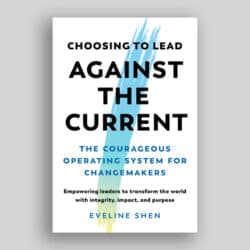The authors of Beloved Economies believe that businesses, co-operatives, non-profit organizations, and public institutions are microcosms that have the potential to effect real change – that pockets of innovation, using the seven practices described in the book, will lead to ripple effects in the whole economy and change “business as usual.”
Beloved Economies: Transforming How We Work, by Jess Rimington and Joanna L. Cea. Page Two Books, 2022; 400 pages; ISBN 978-1-989025-02-4.
I am hearing it everywhere: in conversations with executive directors who have lost swaths of employees, among foundations rethinking their approach to grant decision-making, at meetings of advocacy networks just being created, among groups that mobilize residents for policy activism. Folks in the non-profit sector are thirsty to know: How can we organize our work so that people feel empowered and stick around? How can our organization’s values come to life in our operations? How can our group reflect our vision for the whole world?
Beloved Economies is about workplaces and how we organize ourselves in groups. The book is not, as I thought when I first picked it up, about entire economies or flows of resources and finances on a macro scale. However, the co-authors, Jess Rimington and Joanna L. Cea, believe that businesses, co-operatives, non-profit organizations, and public institutions are microcosms that have the potential to create ripple effects when done differently. The hope is that pockets of innovation (each organization using the seven practices described in the book) will lead to ripple effects in the whole economy and change “business as usual.”
Beloved Economies is essentially about how to build organizations that share the power to create widely.
The knowledge contained in this book was produced in a remarkable way. It was a multi-year co-creation process of grounded research, led by the two authors but involving dozens of “co-learners”:
Our co-learner peers included people from startup enterprises and social movements, hospital departments and municipal governments, faith leaders and financial investors, and more. They have all belonged to a group achieving forms of success that contribute in standout ways to what makes life good, for everyone involved.
A central problem with late-stage capitalism, oppressive economics, and hierarchical workplaces is that the power to create, as well as control money and other privileges, is concentrated in the hands of a few. I have seen this to be true: even in many of the large and small non-profits I work with, decisions and innovation are controlled by higher-ranking employees. This leads to negative repercussions, such as disengagement of team members, hampered innovation, and reduced effectiveness.
Beloved Economies is essentially about how to build organizations that share the power to create widely. The authors have coined an enticing new term to describe this power: “our rights to design.” They describe it this way:
Rights to design are what we exercise when we imagine, decide and build together – when we hold the designer’s pen and sketch our individual and collective futures. These rights are rooted in our universal ability to generate insight into what is (the circumstances around us), imagine possibilities for what could be (potential circumstances that do not yet exist), and play a role in determining and taking ownership of how to bring such possibilities to life.
Seven practices emerged through hundreds of interviews and co-analysis sessions of case studies. These practices, especially when used together, are seen as keys to unlocking the creativity and well-being of organizations and achieving a positive financial and social impact. They are: share decision-making power, prioritize relationships, reckon with history, seek difference, source from multiple ways of knowing, trust there is time, and prototype early and often.
The seven practices are: share decision-making power, prioritize relationships, reckon with history, seek difference, source from multiple ways of knowing, trust there is time, and prototype early and often.
Many of these won’t sound new to you. In the non-profit and social innovation fields, we have talked about shared decision-making, the importance of relationships, and prototyping for many years. However, the book goes into depth, exploring the nuances of such ways of working, how they are interconnected, their historical and cultural contexts, and why they lead to better outcomes for the individuals involved, for the organizations, and for wider communities. I also appreciated the exploration of practices that have not had much air time, in the Canadian non-profit sector at least, like reckoning with history, weaving multiple ways of knowing, and shifting our relationship with time. Importantly, these practices do resonate with what Indigenous organizers have been saying about how they approach their work, and what helps in truth and reconciliation. In many ways, changing how we work is the work of repairing past and current harms of the dominant economy.
The book goes into depth, exploring the nuances of such ways of working, how they are interconnected, their historical and cultural contexts, and why they lead to better outcomes for the individuals involved, for the organizations, and for wider communities.
My favourite chapter in the book, oddly, was “They May Try to Stop You,” about the backlash or resistance faced by organizations enacting “love-full” and “leaderful” practices. I read it the week after a conversation with a friend who works in mining, in which we wondered if, given the chance, our communities had the capacity to be altruistic in decisions about resource use and wealth sharing. The chapter offers an excellent debunking of the “tragedy of the commons” (the idea that collective care of common resources would naturally end in ruin – a concept eventually retracted by its creator), research on how communities respond in crises, and a summary of alternative economies that have existed over time and within our current dominant economy, that “lean into humans’ natural abilities for mutualism.”
As a consultant working with organizations that want to change their ways, and are unsure how, I will be recommending this book and using its framework of seven interwoven practices.
Beloved Economies was a delight to read. The voices of the co-learners are beautiful, the theory is clear, and the case studies inspiring. I need good-news stories to lift my mood and fuel my motivation, and, more than anything, real-life cases make change seem possible. As a consultant working with organizations that want to change their ways, and are unsure how, I will be recommending this book and using its framework of seven interwoven practices.
In a concluding chapter, Rimington and Cea write that “the reconnection that’s possible through transforming how we work is a gift beyond any outcome we could have imagined when we began this research – something that no loveless economy would ever think to measure: belonging. … All we have to do is get started. We can create pieces of a beloved economy today.”
***
Bonus content! I also love the podcast created by the Beloved Economies team: 12 sets of professional screenwriters worked with practitioners to create fictions in response to the question “What would 2030 look like if we had an economy that truly worked and cared for everyone?” The Light Ahead is a series of 10- to 15-minutes episodes that help us image a better future.


